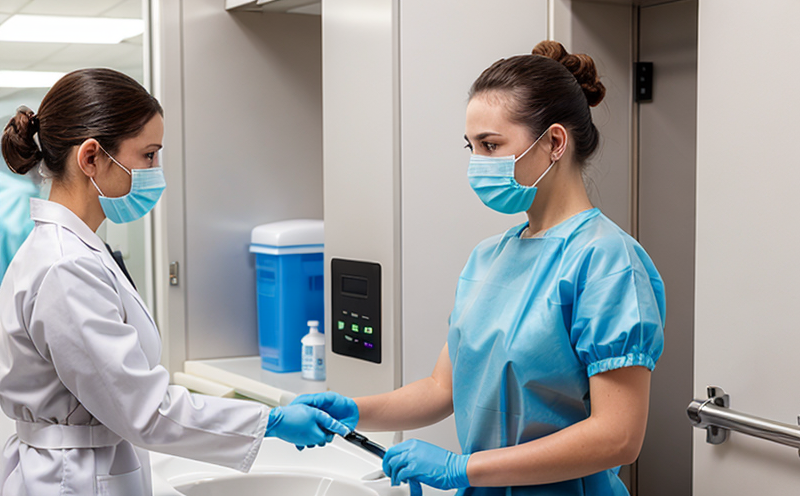Bacterial resistance performance of nonwoven hygiene products
The bacterial resistance performance testing of nonwoven hygiene products is a critical aspect in ensuring the efficacy and safety of such products. Nonwovens are widely used in medical, personal care, and household applications due to their versatility, breathability, and antimicrobial properties.
These materials often come into direct contact with skin or mucous membranes, making it essential to evaluate their resistance against bacterial contamination. This testing ensures that the products meet stringent hygiene standards and are safe for use by the end consumer.
The test typically involves exposing a sample of nonwoven material to a specific strain of bacteria under controlled conditions. The bacterial load is then measured before and after exposure, providing an assessment of how effectively the product resists bacterial growth.
Testing procedures are designed to simulate real-world usage scenarios where bacteria may come into contact with the material. This includes factors such as moisture levels, temperature, and duration of exposure, which can influence the outcome of the test.
The data from these tests is crucial for quality managers and compliance officers in ensuring that products meet regulatory requirements. For R&D engineers, this testing provides valuable insights into optimizing product design to enhance bacterial resistance properties. Procurement teams benefit by understanding the performance criteria when selecting suppliers.
Applied Standards
| Standard | Description |
|---|---|
| ISO 20743:2016 | Bacterial resistance of nonwoven materials in medical and surgical products. |
| ASTM F1681-19 | Determination of bacterial resistance properties of nonwovens for use in wound dressings. |
| EN 20547:2013 | Performance requirements and test methods for surgical gowns, drapes, and caps. |
Why Choose This Test
- Ensure compliance with international hygiene standards.
- Evaluate the effectiveness of nonwoven materials in preventing bacterial contamination.
- Optimize product design for enhanced resistance properties.
- Identify potential areas for improvement in material selection and manufacturing processes.
- Avoid costly recalls by identifying performance issues early in the development process.
International Acceptance and Recognition
The results of bacterial resistance performance tests are widely accepted across various international standards. These tests are recognized for their ability to provide reliable data on the performance of nonwoven hygiene products in real-world conditions.
Countries around the world have adopted these tests as part of their regulatory frameworks to ensure that medical and personal care products meet stringent hygiene standards. This global acceptance underscores the importance of accurate and consistent testing methods.
International organizations such as ISO, ASTM, and EN provide standardized protocols for conducting these tests. Compliance with these standards is essential for manufacturers aiming to expand into international markets or comply with local regulations.





